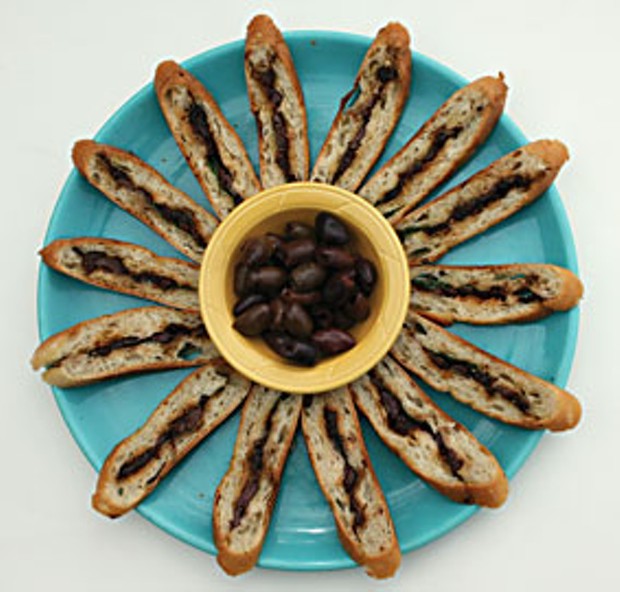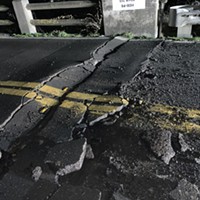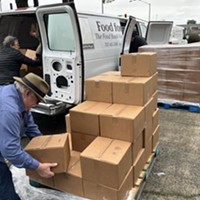Pan Bagna
A savory little sandwich from the south of France
By Bob Doran [email protected] @bobbobbob[
{
"name": "Top Stories Video Pair",
"insertPoint": "7",
"component": "17087298",
"parentWrapperClass": "fdn-ads-inline-content-block",
"requiredCountToDisplay": "1"
}
]
It wasn't what you typically expect at a birthday party for a 5-year-old. Sure there were hot dogs on the grill for the kids, but there was also an absolutely scrumptious spread of food aimed at the parents in attendance. Among the morsels prepared in advance by Diane, a marvelous cook (and the mother of young Max), was a platter of savory finger sandwiches she identified as pan bagna.
Diane's version drew from a couple of recipes, one she'd clipped out of the New York Times food section and another she'd read in Elizabeth David's first cookbook, Mediterranean Food.
David's recipe was inspired by a classic sandwich served in the Provence region on the south coast of France. The British author would write of pan bagna in other cookbooks, offering different takes on the theme. And that's fine, since what goes into the sandwich is, for the most part, up to you. The basic idea is in the name: pan is bread; bagna (or sometimes bagnat) is bath, in this case the bread is bathed in olive oil (well, sort of). We'll get to what's inside soon enough. But first a little bit about Ms. David.
Born in England in 1913, Elizabeth Gwynne David came from a rich, powerful family (her father was a Conservative MP). Of course, Great Britain has never really been known for its cuisine; Elizabeth's interest in food was piqued when she left England to attend school at the Sorbonne in Paris and lived for a couple of years with a French family. She would later spend years as a bonne vivante, bouncing around the Mediterranean, living in Italy, again in France and in Greece. When World War II struck and Greece was invaded, she made her way to Crete, then to Egypt, where she married a military man. The marriage did not last, and when the war ended she was back in England on her own.
She became a food writer, first working for magazines like Harper's, then eventually landing a book contract. Mediterranean Food, first published in 1950, was influential in its day, stirring an interest in country-style cooking and in then-exotic ingredients like eggplants and olive oil. She followed with French Country Cooking in 1951, Italian Food in 1954 and Summer Cooking in 1955. Her emphasis on simple preparations, fresh ingredients and bold flavors bordered on revolutionary in '50s England. And the ideas she laid out resonated through time, resurfacing when California chefs were stirring things up in the '70s, and continuing today. Ask a chef like Alice Waters who influenced her and she will invariably cite Elizabeth David.
So, back to the pan bagna. I should note that the 5-year-old Max is now 20-something. The birthday party was long enough ago that I have no clear recollection of exactly what was in Diane's little sandwiches, although she gave me some basic guidelines. I've since developed my own recipe and method, although almost every time I make them they're at least slightly different. And I've made a lot of pan bagna. When my parents celebrated their golden wedding anniversary I catered the event (with help from my siblings) and assembled tray after tray of the finger sandwiches. They've become a standard choice for potlucks, where someone will invariably ask: 'What's in these, and how do you make them?'
It's not the way Elizabeth did it, but I start with baguettes, either from Brio or Ramone's — what kind is up to you, as long as they are not seeded. Cut the long baguette lengthwise, but not all the way through. Open it up and lay it on a cutting board crust side up. Peel a large clove of garlic and rub it on the bread crust as if you were drawing on it with a crayon, thus impregnating the bread with raw garlic. Now turn the bread over. Sprinkle the inside liberally with olive oil and a little bit of balsamic vinegar. If you like garlic, you can take the rest of the clove and another, mash them and dice them superfine and rub more garlic inside.
From here on out the various ingredients are optional. I usually start with some chopped, pitted, flavorful olives: kalamatas are good; any of Henry's various olives will work as well. A pre-made tapenade is great if you're in a hurry.
Strips of roasted red bell pepper are another standard item. At this time of year I'll often use the ones in a jar.
A layer of thin sliced tomatoes adds color and flavor (unless you buy those out-of-season flavorless supermarket toms). Sundried tomatoes packed in oil will work, as long as you cut them into thin strips.
Marinated artichoke hearts are good too; cut them into long strips and discard the woody bits. (Side note: When I hit Trader Joe's I will often stock up on jars of this and that knowing I'll eventually use them for pan bagna.)
I like to use whole leaves of fresh basil, when it's available. I've also substituted arugula or plain old lettuce.
Last and perhaps most important, lay strips of anchovy from one end to the other. This adds a salty, slightly fishy, savory kick that really makes the sandwich. I've found that it's best not to tell people about the anchovies right off, since people tend to have an irrational fear of the little fishies. Of course this being Humboldt, where vegetarians abound, you have to tell folks this is not a flesh-free dish. And I'll sometimes make one platter with the fish and one without. It's not quite the same, but still good.
Once you have the layers of ingredients evenly spread along the baguette, fold it closed and rub the outside with more olive oil, lots of it. Give it a little bath. Then press the loaf flat, put it on a tray, and put some sort of weight on top. I typically cover the bread in plastic wrap (or put it back in its long bag), place a second tray on top and put a large pot of water on that. Anything heavy will do. I've used bricks and stacks of books (watch out for the oil). When we made them for my parent's anniversary we used bundles of Sunset magazines they'd saved up over the years.
In an hour or so the loaf should be pretty flat. (I'll often make them a day ahead and press them overnight.) Place the loaf on a cutting board and cut into 1/2-3/4 inch strips, about the width of your little finger. Cut them at an angle so they'll be long and thin. If you've made your original not-quite-through cut properly, they should stay together. Arrange them on a platter and take them to a party. Wait for the compliments and questions.
Now, I should point out that there are all sorts of other ingredients used in various recipes for pan bagna. Some favor thin sliced radishes and cucumbers. Others use tuna in place of (or in addition to) the anchovy. Others suggest fava beans and/or hard-boiled eggs. One recipe I found used this sliced salami, although I think that turns it into a different sort of sandwich.
Andrew Bonamici, a member of the Slow Food Eugene convivium, suggests goat cheese (Cypress Grove, of course). Bonamici, who has a whole webpage dedicated to pan bagna, notes that the people of Nice, France, take the sandwich quite seriously, claiming it as their own. They even have an organization, Commune Libre du Pan Bagnat: Association pour la Defence et la Promotion de l'Appelation Pan Bagnat, to defend and protect pan bagna. (They go with the pan bagnat spelling.)
Their recipe (in French) is close to the one Ms. David used, and, I suppose, not far from the one Diane used. We'll close with Elizabeth's take on pan bagna:
Elizabeth David's recipe (from Mediterranean Cooking)
Pan Bagna (a Provençal sandwich)
"Cut fresh French rolls in half lengthways. Rub them with garlic. Spread with stoned black olives, pieces of red pimento, tomato and young raw broad [fava] beans. Pour on a little olive oil and vinegar over the rolls, join the two halves together and put them under a heavy weight for 30 minutes.
"Pan Bagna is served in Provençal cafés with a bottle of wine when a game of boules is in progress. (Boules is akin to the Italian's bocce.] The ingredients vary according to what is in season, or what is available. There may be anchovies, gherkins [pickles], artichoke hearts, lettuce. Probably it is the origin of salade niçoise, which is made with the same variety of ingredients, but without the bread."
Speaking of Food
Comments
Showing 1-1 of 1
more from the author
-
Around Humboldt County
- Sep 3, 2014
-
Around Humboldt County
- Aug 27, 2014
-
Around Humboldt County
- Aug 20, 2014
- More »




































